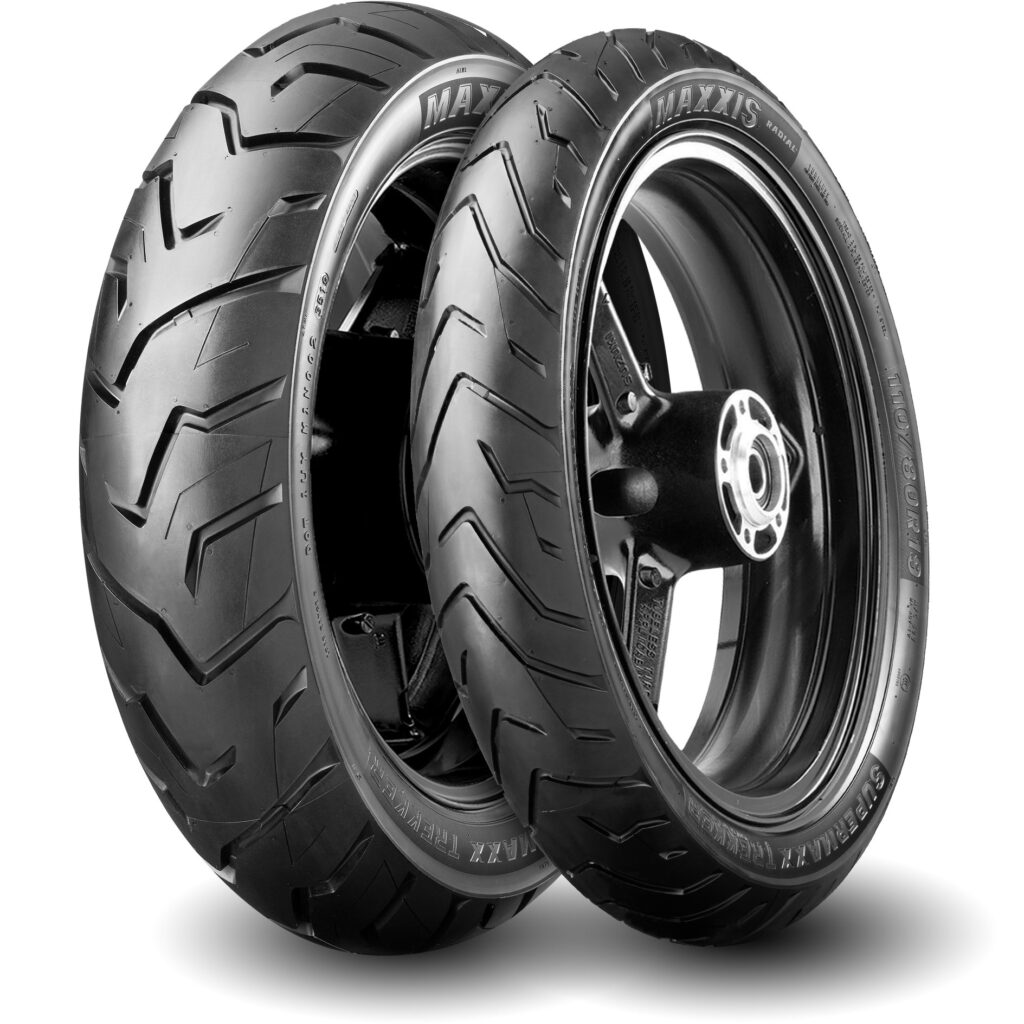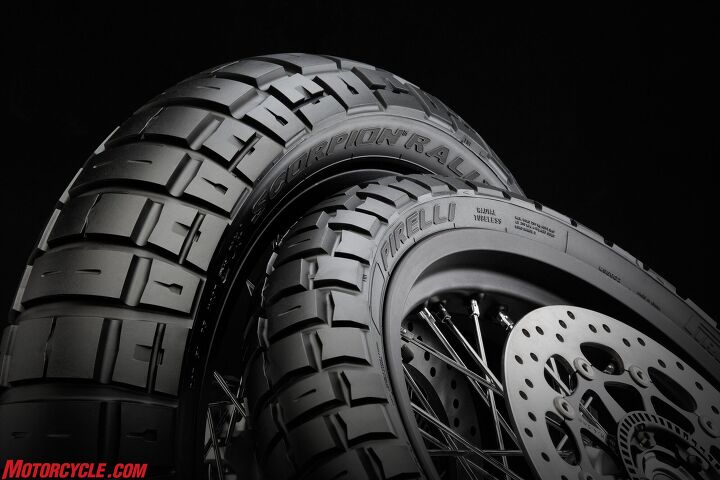Motorcycle Tyre Guide for Matching Tyres to Riding Style
Motorcycle Tyre Guide for Matching Tyres to Riding Style
Blog Article
Check out the Importance of Choosing the Right Tyres With Our Informative Motorcycle Tyre Guide
Selecting the appropriate tires is vital for any type of Motorcycle fanatic. The best tyres enhance efficiency, boost security, and add to overall comfort throughout adventures. Comprehending the different types, dimensions, and upkeep methods can considerably influence your riding experience. As riders encounter varied terrains and conditions, recognizing exactly how to choose the most effective tires ends up being critical. What factors should be taken into consideration to ensure peak performance? The answers wait for in the complying with sections.
Recognizing Various Kinds Of Motorcycle Tyres
Picking the best kind of Motorcycle tire may appear overwhelming, recognizing the different alternatives offered can greatly improve a rider's experience. Motorcycle tires are mostly categorized into 3 types: off-road, touring, and sport. Touring tires are designed for long-distance traveling, supplying resilience and comfort on freeways. These tyres include a tread pattern that gives superb grasp and security, making them ideal for different climate conditions.Sport tyres, on the various other hand, prioritize efficiency and handling, featuring a softer rubber substance that boosts grasp throughout cornering. They are excellent for cyclists that delight in perky adventures on twisty roads or racetracks. Off-road tires are tailored for sturdy surface, with an aggressive walk pattern that supplies grip on loosened surfaces like dirt or gravel.
Examining Your Riding Design and Requirements
Understanding exactly how various riding problems impact efficiency is vital when assessing riding style and needs. This examination can assist bikers in picking the appropriate tire kinds that align with their particular demands. By considering elements such as terrain and weather, riders can make educated decisions for optimal safety and security and experience.
Riding Problems Impact
As bikers browse various terrains and weather, understanding how these aspects influence Motorcycle efficiency ends up being important. Various riding environments, such as wet, dry, or off-road, need specific tyre characteristics to assure safety and perfect handling. Wet conditions require tyres that offer much better grip to stop hydroplaning, while off-road riding necessitates robust tread patterns for grip on loosened surfaces. Furthermore, temperature level variations can influence tire pressure and efficiency, requiring changes based upon the problems faced. Motorcyclists should assess their regular routes and environments when picking tires, as the best option can greatly improve their riding experience, assuring both convenience and security in diverse situations. Matching tyres to riding conditions is necessary for effective Motorcycle performance.
Tire Types Introduction
Understanding the various types of Motorcycle tyres is important for bikers aiming to enhance their efficiency and safety. Each tire type accommodates particular riding styles and conditions. Sporting activity tires, made for high hold and agility, are suitable for hostile riding and track days. Exploring tyres prioritize durability and comfort, making them appropriate for long-distance journeys. Off-road tires include much deeper treads for grip on irregular surfaces, attracting experience applicants. Cruiser tires provide a smooth adventure, typically highlighting aesthetic appeals for choppers and cruisers. Dual-sport tyres blend attributes of both off-road and on-road tyres, serving functional riders. Examining individual riding styles and needs assurances that the right tire type is selected, eventually improving general riding experience and safety.
The Influence of Tyre Dimension on Performance
Tire size significantly influences a bike's total performance, impacting handling, traction, and security. The size and size of tires can especially change a bike's dynamics. Bigger size tyres can improve high-speed performance, offering smoother trips and boosted stability throughout straight-line traveling. They might likewise need more effort for quick handling. Alternatively, narrower tyres have a tendency to supply better dexterity and responsiveness, making them suitable for limited edges and detailed riding conditions.Additionally, the element ratio, which connects to the tire's elevation, plays a crucial duty in performance attributes. A reduced account tyre might enhance cornering security but can compromise comfort because of minimized padding. Ultimately, selecting the proper tyre size straightens with the motorcyclist's preferences and planned usage, whether for sport, touring, or off-road riding. Comprehending these nuances guarantees peak efficiency and enhances the general riding experience.
Step Patterns and Their Significance
Walk patterns on Motorcycle tires play an important function in determining performance, influencing variables such as hold and handling. Various types of step layouts satisfy numerous weather and surfaces, guaranteeing suitable traction and stability. Comprehending these patterns is important for bikers looking for to improve their Motorcycle's efficiency and safety and security.
Kinds Of Footstep Patterns
The efficiency of a motorcycle is considerably influenced by the kind of tread pattern on its tyres. Various tread patterns serve specific functions, accommodating different riding conditions. Slick tyres feature a smooth surface, perfect for completely dry problems and auto racing, supplying maximum hold. In contrast, tyres with deep grooves and complex patterns are designed for damp or off-road conditions, improving water displacement and traction. Some step styles, such as dual-purpose tyres, strike an equilibrium for both on-road and light off-road usage. motorcycle tyre guide. Furthermore, sporting activity tyres typically have an extra aggressive walk pattern, enhancing cornering security. Comprehending these kinds of tread patterns helps bikers select the appropriate tires for their designated riding experiences and ecological conditions
Impact on Performance
Choosing the appropriate walk pattern substantially influences a motorcycle's performance in different riding problems. Step patterns are created to maximize hold, handling, and stability, straight affecting cornering ability and stopping performance. As an example, a more hostile step layout enhances grip on unequal surface areas, making it ideal for off-road riding. On the other hand, a slicker tread pattern advertises smoother adventures on paved roadways, reducing moving resistance and improving gas performance. The deepness and setup of grooves likewise play a vital role, permitting efficient water variation and reducing hydroplaning risks. Eventually, picking an ideal tread pattern customized to specific riding designs and atmospheres guarantees enhanced control, security, and general riding experience, highlighting the significance of this choice for Motorcycle fanatics.
Weather and Surface Suitability
Weather and terrain types greatly influence the viability of Motorcycle tyre walk patterns. In damp conditions, tyres with much deeper grooves and certain patterns are essential to funnel water away and decrease the threat of aquaplaning. On the other hand, a flatter tread design offers perfect surface get in touch with for dry roadways, enhancing grasp and stability. For off-road riding, bumpy tires offer increased grip on loose surface areas like mud and gravel. Each step pattern offers a distinct function; because of this, selecting the proper tire is very important for performance and safety. Riders must consider their typical riding atmosphere-- whether urban, rural, or varied surfaces-- to assure their tires can appropriately deal with the conditions, promoting a more secure and more enjoyable riding experience.
Preserving Your Motorcycle Tyres for Long Life
While Motorcycle lovers typically focus on efficiency and aesthetics, ignoring tire upkeep can bring about premature wear and dangerous riding problems. On a regular basis checking tyre pressure is essential, as both under-inflation and over-inflation can detrimentally influence dealing with and grip. On top of that, preserving the right you can try this out stress can enhance fuel performance and total performance.Routine evaluations internet for indicators of damage, such as punctures or splits, likewise play an important role in extending tyre life. Maintaining tyres clean from particles and pollutants assurances peak grip. Revolving tires on a regular basis assists distribute put on equally, prolonging their lifespan.Proper alignment and harmonizing of the wheels are necessary for maintaining security and lowering irregular wear. Ultimately, sticking to the supplier's recommendations for tyre replacement intervals guarantees that riders are furnished with reputable and safe tires. By focusing on these upkeep techniques, motorcyclists can take pleasure in a more secure and longer-lasting riding experience.
Recognizing Tyre Use and When to Change
To guarantee ideal security and efficiency, cyclists should be attentive in recognizing tyre wear and recognizing when to replace their tires. Tyre walk deepness is a critical indicator; a deepness of 1.6 mm or much less generally signals the demand for replacement. Cyclists should additionally analyze the tires for uneven wear patterns, which can suggest alignment or suspension problems. Cracks, bulges, or noticeable cables are severe indicators of deterioration and warrant prompt replacement.Monitoring tire pressure is necessary as under-inflation can speed up wear and compromise security. Furthermore, riders ought to be mindful of the age of their tires; also if the tread appears sufficient, tyres older than 5 years might require changing because of rubber degradation. Routine assessments and maintenance will certainly aid determine that tires remain in peak problem, inevitably enhancing both cyclist safety and security and overall Motorcycle efficiency.

Tips for Choosing the Right Tyres for Your Bike
Picking the right tyres for a motorbike is vital for ensuring suitable performance and safety and security, especially after identifying the indicators of wear that necessitate replacement. Bikers should consider their riding design and the types basics of problems they typically experience. Sport tyres use enhanced grip for hostile riding, while visiting tyres provide longevity and convenience for long journeys.Next, it's important to inspect the producer's requirements for the Motorcycle, as these guidelines ensure compatibility. Furthermore, reviewing tire size, walk pattern, and rubber compound can affect performance. Riders need to additionally factor in climate condition; certain tyres perform better in completely dry or wet environments.Finally, buying from reputable brand names can guarantee high quality and integrity, while seeking advice from fellow bikers or experts can offer useful insights. By very carefully taking into consideration these aspects, cyclists can choose tyres that improve their Motorcycle's performance, safety and security, and overall riding experience.
Frequently Asked Concerns
Exactly How Do Weather Impact Tire Performance?
Climate condition substantially influence tire performance, affecting grasp, taking care of, and put on. Rain can minimize traction, while severe heat may trigger getting too hot. Cold temperatures can harden rubber, endangering versatility, consequently influencing general security and ability to move when traveling.
Can I Mix Different Tire Brands on My Motorcycle?
Blending various tire brand names on a bike can cause inconsistent handling and performance - motorcycle tyre guide. Specialists advise utilizing the very same brand and design for both front and rear tyres to ensure maximum security and security during experiences
What Is the Average Life-span of Motorcycle Tyres?

Do Motorcycle Tyres Demand to Be Balanced?
Motorcycle tyres do need harmonizing to ensure even weight circulation. Properly balanced tyres boost security, improve handling, and lower uneven wear, inevitably adding to a much safer and much more comfy riding experience for motorcyclists.
How Usually Should I Check My Tyre Pressure?
Normal checks of tyre pressure are essential for safety and security and efficiency. It is advised to check Motorcycle tyre stress at the very least when a month and eventually trips, making certain excellent handling and fuel effectiveness. These tires feature a walk pattern that offers exceptional hold and security, making them appropriate for different weather condition conditions.Sport tyres, on the various other hand, prioritize efficiency and handling, featuring a softer rubber substance that boosts hold during cornering. Conversely, narrower tires have a tendency to offer better dexterity and responsiveness, making them suitable for tight edges and elaborate riding conditions.Additionally, the facet ratio, which associates to the tire's elevation, plays a crucial function in performance attributes. Adhering to the maker's recommendations for tire substitute intervals guarantees that bikers are geared up with risk-free and trusted tyres. To ensure ideal safety and security and efficiency, bikers have to be cautious in acknowledging tire wear and recognizing when to replace their tyres. Sport tyres supply enhanced grasp for aggressive riding, while visiting tires provide toughness and convenience for lengthy journeys.Next, it's important to examine the manufacturer's specifications for the Motorcycle, as these guidelines ensure compatibility.
Report this page